Pennants have flown for centuries, above battlements, off lances, adorning halls as forms of identification, signalling pride, prestige and family affiliation. The more modern iteration is the pennant or flag presented to the victorious team, school or club—perhaps giving the same pride and identification as our medieval ancestors experienced.
The oldest pennant held by the School is dated 1909, measuring 560 mm x 1700 mm, which research with Somerville House and St Margaret’s archives has revealed was for tennis—a sport close to the heart of the Lady Principal/Head Mistress of the time, Miss Milisent Wilkinson.
This pennant not only celebrates the Grammar tennis team’s performance, but also the forward-thinking of three women: Miss Milisent Wilkinson (BGGS); Miss Eliza Fewings (Somerville House or BGHS and ex-BGGS), and Miss Juliet Lyon (St Margaret’s Anglican Girls School), who established the QGSSSA in 1908. In 1909, there were only four schools in the competition—Brisbane Girls Grammar School, Somerville House, St Margaret’s or Eton High School and Girton College, and the sports were tennis, swimming, and basketball (netball).
The interpretation of the range of pennants in the Grammar collection required collaboration between me and Somerville House archivist, Ms Connie Baird. This sleuthing determined that as the pennants evolved, more information was placed on each pennant. In 1920, one pennant read S BGGS 1920, meaning Girls Grammar won the QGSSSA swimming that year or T AEQ BGGS 1939 B, which translates to Girls Grammar came equal first place in B Grade Tennis.
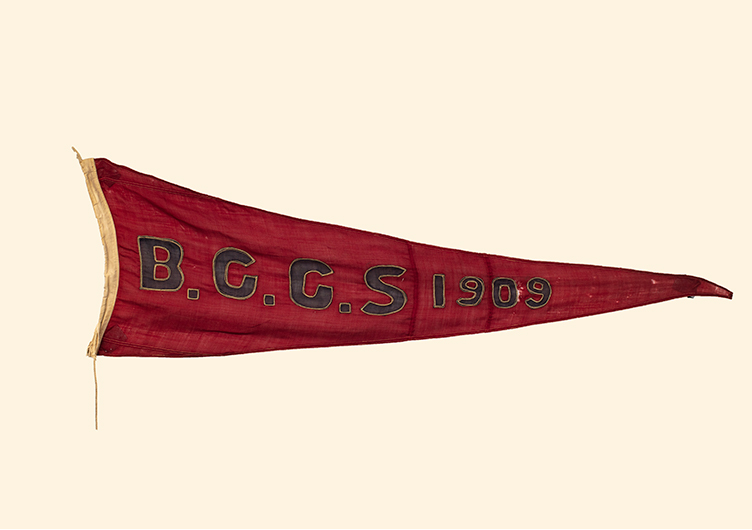
1909 Sports Association of Secondary Girls’ Schools Tennis Pennant
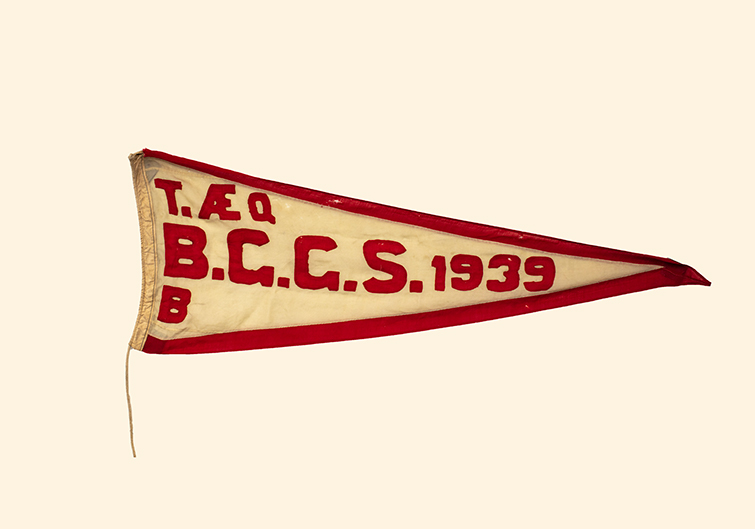
1939 QGSSSA pennant for equal first place in B Grade Tennis
The concept of a pennant or a premiership flag as a symbol of a club or school’s success has a long history in Australian sporting culture. In Victoria, the premiership flag was hoisted at the successful Australian Rules Football club as early as 1895. Therefore, one can assume that this tradition was practised across Australia at all levels of sport. In fact, to this day, sporting commentators talk about winning ‘the flag’.
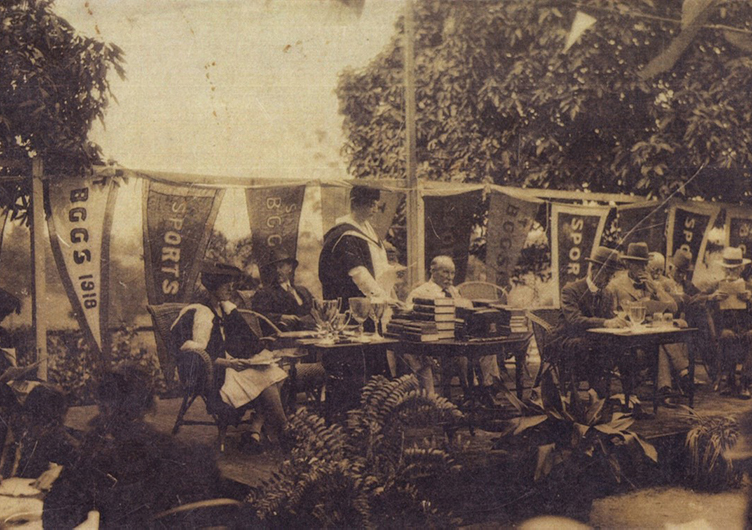
1927 Speech Day behind the Main Building and decorated with sporting pennants
The making of these pennants is a journey in itself, and it appears that a company named Relyans and Lanham Ltd (tent, flag, sail and tarpaulin makers), trading as A Reliance product for flags and pennants, was QGSSSA preferred supplier.
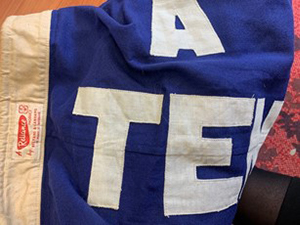
1968 Pennant maker, Reliance by Relyans and Lanham
The material culture of the 1909 pennant is powerful. Apart from its substantial longevity, it is tangible proof of the existence of the QGSSSA—that sporting success was celebrated and honoured, and that the Association embraced traditional sporting ephemera. From Girls Grammar’s viewpoint, it captures Milisent Wilkinson’s belief when extolling the virtues of cricket, ergo sport, that ‘it seems to me that whatever benefits cricket confers on boys, it confers on girls. Surely, we want our girls to be physically strong and healthy, and certainly girls need every one of the qualities called for out-of-doors games—courage, endurance, promptitude in action, and skill of hand and eye.’ (1908 Annual Report)
The fact that the School has so carefully preserved these pennants symbolises our pride in the participation and prowess of past students. They have been proudly and ceremoniously displayed on many significant occasions in the history of the School, from Speech Days to the opening of new buildings. Now, they are presented with public ceremony to the Principal by the captains of the specific sport on Assembly when the whole School community can acknowledge the successes of their Grammar sisters.
Our archives hold many of these precious pennants—old, new, prized overall pennants, participation pennants, memorabilia pennants—representing hours and hours of effort, teamwork, sacrifice, and exceptional performance, but perhaps they are not as precious as that red 1909 pennant which symbolises the beginning of the Grammar competitive sporting journey.
Ms Pauline Harvey-Short (1971)
Manager, School History and Culture
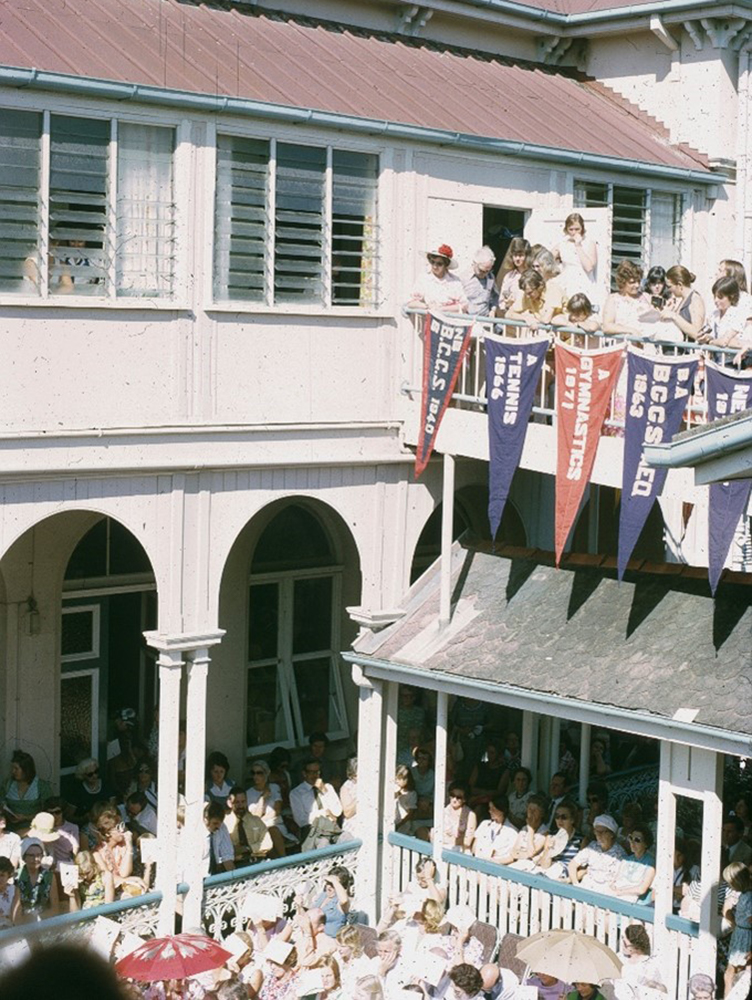
1975 School Day and Opening of the Library
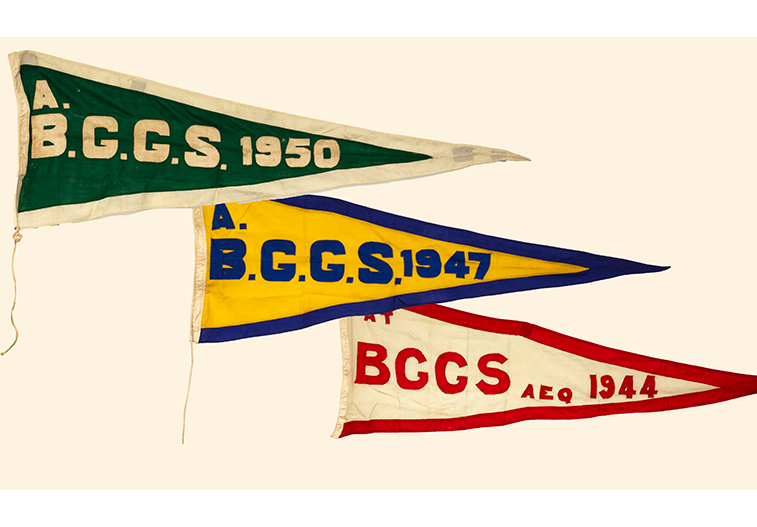
Pennants from Athletics and A Grade Tennis
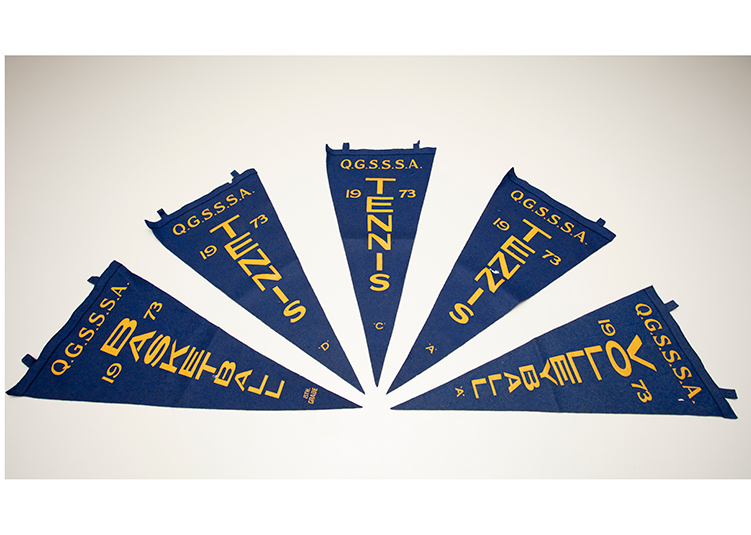
1973 Felt pennants


